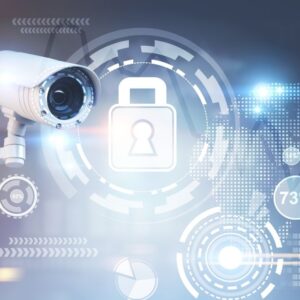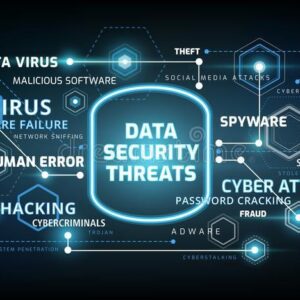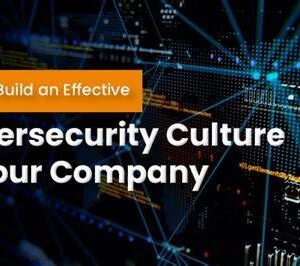In today’s digital age, cybersecurity has become more crucial than ever. As our reliance on technology continues to grow, so does the number of threats to our personal, business, and government data. Cybercriminals are constantly finding new ways to breach systems, steal sensitive information, and cause disruption. As a result, understanding the various types of cybersecurity techniques is vital to safeguarding our digital lives.
Cybersecurity encompasses a wide array of strategies, tools, and practices that work together to protect networks, devices, programs, and data from unauthorized access, attacks, or damage. Let’s dive into the different types of cybersecurity techniques that help keep the digital world safe.
1. Network Security
Network security involves protecting a computer network from intruders, whether targeted attackers or opportunistic malware. This can include both hardware and software technologies and aims to prevent unauthorized access, misuse, malfunction, or modification of the network. Some common network security measures include:
- Firewalls: Act as a barrier between a trusted internal network and untrusted external networks, filtering traffic based on set rules.
- Intrusion Detection Systems (IDS): Monitors network traffic for suspicious activities and alerts administrators when potential threats are detected.
- Virtual Private Networks (VPNs): Provide encrypted connections between remote users and the network, making it more difficult for hackers to intercept data.
2. Application Security
Applications are common targets for cybercriminals, as vulnerabilities in software can give attackers a way into systems. Application security focuses on ensuring that software applications are free from weaknesses or flaws that can be exploited. Techniques to secure applications include:
- Code Reviews: Checking the source code for potential vulnerabilities during development.
- Penetration Testing: Simulating cyberattacks to find weaknesses before malicious hackers do.
- Security Patches and Updates: Regularly updating applications to fix any discovered vulnerabilities.
3. Data Security
Data security is all about protecting sensitive data from unauthorized access and corruption. As businesses and individuals store an increasing amount of personal and financial data online, ensuring its protection becomes a top priority. Data security techniques include:
- Encryption: Encoding data so that it can only be read by someone with the decryption key. This is especially important for transmitting sensitive information over the internet.
- Access Control: Limiting access to sensitive data based on user roles, ensuring that only authorized personnel can view or modify it.
- Backup Solutions: Regularly backing up data to prevent loss in case of cyberattacks like ransomware.
4. Endpoint Security
End users often present the most vulnerable entry point for cyber threats, whether through weak passwords, infected devices, or insecure networks. Endpoint security focuses on protecting individual devices, such as computers, smartphones, tablets, and IoT devices. Techniques in this area include:
- Antivirus Software: Scans and removes malicious software (malware) that could harm devices.
- Mobile Device Management (MDM): Controls and secures employees’ mobile devices, ensuring that they don’t become a vector for cyberattacks.
- Patch Management: Ensures that all devices are up-to-date with the latest security patches, reducing vulnerabilities.
5. Identity and Access Management (IAM)
Identity and Access Management (IAM) refers to the policies and technologies used to manage user identities and control access to resources within an organization. It ensures that only authorized users can access certain systems and data. IAM techniques include:
- Multi-Factor Authentication (MFA): Requiring two or more forms of identification (e.g., password and fingerprint) to access systems, making it more difficult for attackers to compromise accounts.
- Single Sign-On (SSO): Allows users to access multiple applications with one set of credentials, reducing the need for multiple passwords and improving convenience.
- Role-Based Access Control (RBAC): Assigning access rights based on a user’s role within the organization, limiting what each person can access.
6. Cloud Security
With the growing trend of cloud computing, securing data and applications in the cloud has become an essential part of any cybersecurity strategy. Cloud security techniques focus on protecting data and services hosted in cloud environments. Key practices include:
- Cloud Encryption: Encrypting data both in transit and at rest to prevent unauthorized access.
- Data Loss Prevention (DLP): Prevents sensitive information from being accidentally or maliciously shared or leaked from cloud environments.
- Cloud Access Security Brokers (CASBs): Help organizations monitor and enforce security policies for their cloud services.
7. Security Information and Event Management (SIEM)
SIEM systems provide real-time analysis of security alerts generated by network hardware and applications. SIEM is an essential technique for monitoring and responding to potential threats. It combines the following elements:
- Log Management: Collecting, storing, and analyzing logs from various systems to detect suspicious behavior.
- Real-Time Analysis: Identifying and responding to potential threats as they happen.
- Incident Response: Coordinating efforts to mitigate damage and prevent further breaches once a security incident is detected.
8. Disaster Recovery and Business Continuity
No system is 100% secure, and in the unfortunate event of a cyberattack or disaster, having a plan in place to recover from it is crucial. Disaster recovery (DR) and business continuity (BC) plans are strategies that organizations use to ensure they can continue operating and minimize downtime after an incident. Key aspects include:
- Backup and Restore Plans: Regularly backing up data and creating system restore points to quickly recover after an attack.
- Incident Response Plans: Having a clear, structured process for dealing with cyberattacks and minimizing damage.
- Redundancy: Ensuring that critical systems have backup processes or alternative paths to function if one system fails.
Conclusion
Cybersecurity is an ongoing battle, and the techniques used to protect systems and data continue to evolve as new threats emerge. The best defense is a multi-layered approach that incorporates various cybersecurity techniques working together to provide comprehensive protection. By understanding and implementing these techniques, individuals and organizations can better safeguard themselves against the growing risks of the digital world.
Whether you’re a business owner, IT professional, or simply an individual trying to protect your personal data, the more you know about cybersecurity, the better equipped you’ll be to handle potential threats. Stay informed, stay vigilant, and always be prepared for the next challenge in the ever-changing landscape of cybersecurity.














